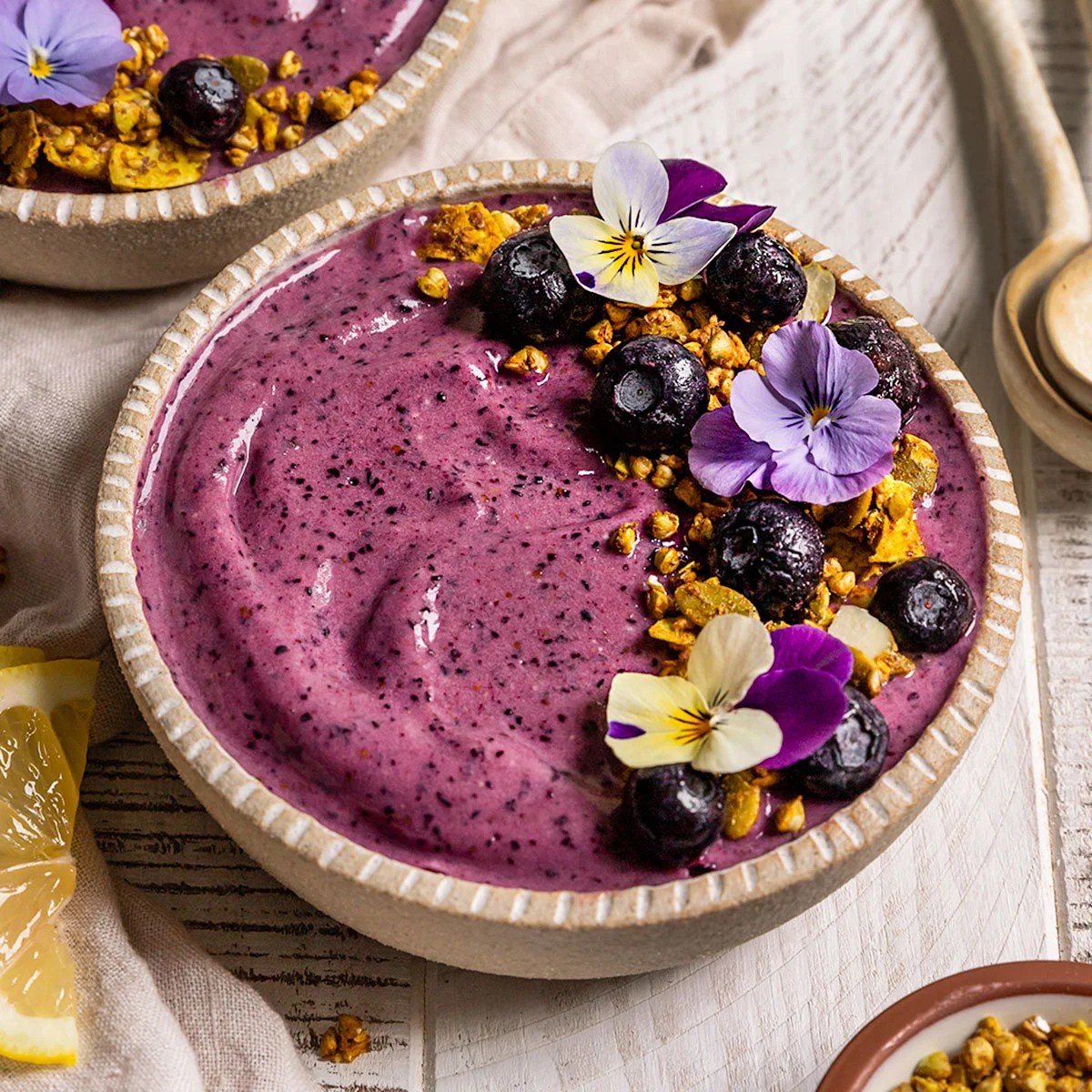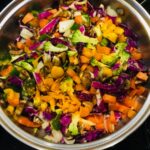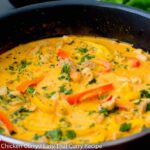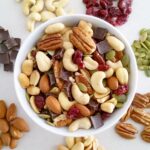Dive into a vibrant world of flavor and nutrition with egg-free smoothie bowls! Imagine creamy textures bursting with fresh fruit, a kaleidoscope of colors, and a symphony of tastes all crafted without a single egg. These nutrient-packed powerhouses offer a guilt-free indulgence, perfect for breakfast, a healthy snack, or a refreshing dessert. We’ll explore diverse recipes, highlighting protein, fiber, and antioxidants, uncover the secrets to creating visually stunning bowls, and guide you through customizing them to fit your dietary needs and preferences. Get ready to embark on a delicious and healthy journey!
From vibrant berry blends to creamy green goodness, the possibilities are endless. We’ll delve into ingredient swaps, showcasing nutrient-rich alternatives to create bowls that are not only delicious but also packed with vitamins, minerals, and essential nutrients. Learn to layer ingredients for maximum visual impact and discover topping combinations that elevate both the look and the nutritional value of your creations. Whether you’re a seasoned smoothie aficionado or a kitchen novice, this guide will empower you to craft stunning and nutritious egg-free smoothie bowls that will leave you feeling energized and satisfied.
Egg-Free Smoothie Bowl Variations
Egg-free smoothie bowls offer a delicious and versatile way to enjoy a nutritious breakfast or snack, catering to various dietary needs and preferences. These bowls are packed with fruits, vegetables, and other healthy ingredients, providing a vibrant and flavorful start to your day. The following recipes showcase the adaptability of egg-free smoothie bowls, highlighting different nutritional focuses.
High-Protein Power Bowl
This smoothie bowl emphasizes protein to support muscle growth and repair, keeping you feeling full and energized. The creamy texture comes from a blend of nuts and seeds, while the berries provide a burst of sweetness and antioxidants.
Ingredients: 1 cup frozen berries (mixed or your favorite), ½ cup unsweetened almond milk, 2 tablespoons almond butter, 1 tablespoon chia seeds, 1 scoop protein powder (vegan), 1 tablespoon hemp seeds.
Preparation: Combine all ingredients in a high-speed blender and blend until smooth and creamy. Pour into a bowl and top with your favorite additions. Consider adding sliced almonds for extra crunch, a drizzle of honey for sweetness, or a sprinkle of shredded coconut for added flavor and texture. The vibrant purple hue of the berries contrasts beautifully with the creamy, nutty base.
High-Fiber Fiber Fiesta Bowl
This recipe focuses on high-fiber ingredients to promote digestive health and keep you feeling full longer. The combination of fruits, vegetables, and seeds creates a naturally sweet and satisfying bowl.
Ingredients: 1 cup spinach, ½ cup frozen mango chunks, ½ cup chopped pineapple, ¼ cup rolled oats, 2 tablespoons flaxseed meal, ½ cup coconut water.
Preparation: Blend all ingredients until smooth. The vibrant green from the spinach is subtly balanced by the sunny yellow of the mango and pineapple. The oats add a pleasant chewiness to the otherwise smooth texture. Top with a sprinkle of granola for extra crunch and fiber, or a dollop of Greek yogurt (if dairy is acceptable) for added creaminess.
High-Antioxidant Antioxidant Abundance Bowl
This smoothie bowl is bursting with antioxidants from a variety of colorful fruits and vegetables, supporting overall health and protecting your cells from damage. The bright colors and diverse flavors make it a visually appealing and delicious choice.
Ingredients: 1 cup frozen mixed berries (strawberries, blueberries, raspberries), ½ cup chopped beetroot, ½ cup orange juice, 1 tablespoon spirulina powder, 1 tablespoon pumpkin seeds.
Preparation: Blend all ingredients until smooth. The vibrant mix of colors creates a stunning visual appeal. The earthy beetroot adds a subtle sweetness and deep color, complemented by the bright citrus notes of the orange juice. Garnish with a few fresh berries and a sprinkle of pumpkin seeds for added texture and visual interest. The spirulina adds a slightly earthy undertone, but the overall flavor is fruity and refreshing.
Nutritional Comparison
| Recipe | Calories (approx.) | Protein (g) | Fiber (g) |
|---|---|---|---|
| High-Protein Power Bowl | 350-400 | 25-30 | 8-10 |
| High-Fiber Fiber Fiesta Bowl | 280-320 | 8-10 | 15-18 |
| High-Antioxidant Antioxidant Abundance Bowl | 250-300 | 5-7 | 6-8 |
Note: Calorie, protein, and fiber counts are approximate and may vary based on specific ingredients and brands used.
Ingredient Spotlight

Smoothie bowls offer a vibrant and nutritious way to start your day or enjoy a healthy snack, and crafting delicious egg-free versions is surprisingly easy. This section highlights common smoothie bowl ingredients and their egg-free alternatives, along with some powerhouse superfoods to boost your bowl’s nutritional profile. We’ll delve into nutritional comparisons and provide a recipe showcasing these superfoods’ combined benefits.
Common Smoothie Bowl Ingredients and Egg-Free Substitutes
Many traditional smoothie bowl recipes rely on eggs for binding or richness. However, several plant-based alternatives offer similar functionalities and often boast additional nutritional advantages. The following table compares common ingredients with their egg-free counterparts:
| Ingredient | Egg-Free Substitute | Nutritional Comparison |
|---|---|---|
| Eggs (for binding/creaminess) | Chia seeds/flax seeds (soaked) | Eggs provide protein and fat. Chia/flax seeds offer similar binding properties, along with fiber, omega-3 fatty acids, and antioxidants. A tablespoon of chia seeds contains approximately 100 calories, 4 grams of protein, and 10 grams of fiber, compared to approximately 78 calories and 6 grams of protein in a large egg. |
| Yogurt (for creaminess) | Coconut yogurt/cashew yogurt | Dairy yogurt offers protein and calcium. Coconut and cashew yogurts provide a creamy texture with varying levels of protein and healthy fats. Coconut yogurt is often lower in protein but higher in healthy fats compared to dairy yogurt. Cashew yogurt can offer a good source of protein and healthy fats. |
| Butter (for richness) | Avocado/Nut butter | Butter provides fat and flavor. Avocado adds healthy monounsaturated fats, fiber, and vitamins. Nut butters (almond, peanut, etc.) offer healthy fats, protein, and fiber. One tablespoon of peanut butter contains about 90 calories, 4 grams of protein, and 2 grams of fiber, while one tablespoon of butter has about 100 calories and negligible fiber. |
| Milk (for liquid base) | Almond milk/Oat milk | Dairy milk offers calcium and protein. Almond and oat milks provide a liquid base with varying levels of vitamins and minerals. Almond milk is often lower in calories and fat than dairy milk, while oat milk can be a good source of fiber. |
| Honey (for sweetness) | Maple syrup/Date paste | Honey provides sweetness and antioxidants. Maple syrup offers sweetness and minerals. Date paste provides sweetness and fiber. One tablespoon of honey contains about 64 calories, while one tablespoon of maple syrup contains approximately 52 calories. Date paste offers a higher fiber content. |
Five Superfoods for Egg-Free Smoothie Bowls
Superfoods are nutrient-dense foods packed with vitamins, minerals, and antioxidants. Incorporating them into your egg-free smoothie bowls significantly enhances their nutritional value.
The following list details five superfoods ideal for egg-free smoothie bowls:
- Acai berries: Rich in antioxidants, promoting cell health and protecting against damage.
- Spinach: Excellent source of vitamins A, C, and K, as well as iron and folate.
- Chia seeds: Packed with omega-3 fatty acids, fiber, and protein, supporting heart health and digestive regularity.
- Hemp seeds: Complete protein source with essential amino acids, providing building blocks for muscle growth and repair.
- Blueberries: High in antioxidants, particularly anthocyanins, linked to improved brain function and reduced inflammation.
Recipe: Tropical Green Power Bowl
This recipe combines three superfoods (Acai, Spinach, and Chia Seeds) for a vibrant and nutritionally packed smoothie bowl.
Ingredients:
- 1 frozen acai packet
- 1 cup spinach
- 1 tablespoon chia seeds
- 1/2 cup frozen mango chunks
- 1/2 cup coconut water
- 1/4 cup coconut yogurt
- Toppings: Fresh berries, granola (ensure egg-free), shredded coconut
Instructions:
- Combine all ingredients (except toppings) in a blender and blend until smooth.
- Pour into a bowl and top with your favorite toppings.
Nutritional Contribution: This bowl provides a significant boost of antioxidants from acai and blueberries, essential vitamins and minerals from spinach, fiber and omega-3s from chia seeds, and healthy fats from coconut yogurt. The combination creates a well-rounded, nutrient-rich breakfast or snack.
Creating egg-free smoothie bowls is more than just blending ingredients; it’s an art form. It’s about crafting a visually stunning and nutritionally complete meal that nourishes your body and delights your senses. We’ve explored diverse recipes, ingredient substitutions, and presentation techniques, empowering you to create customized bowls tailored to your specific dietary needs and preferences. So, unleash your creativity, experiment with flavors and textures, and enjoy the journey of crafting your own masterpiece—a vibrant, delicious, and healthy egg-free smoothie bowl.
Frequently Asked Questions
Can I make these smoothie bowls ahead of time?
It’s best to assemble and enjoy smoothie bowls immediately for optimal texture and freshness. However, you can prepare the smoothie base ahead of time and store it separately in the refrigerator. Add toppings just before serving.
How long do egg-free smoothie bowls last in the refrigerator?
Smoothie bases stored in airtight containers will typically last for 2-3 days in the refrigerator. Toppings should be added fresh before consumption.
Are these smoothie bowls suitable for freezing?
Freezing smoothie bowls isn’t recommended as it can alter the texture and potentially affect the quality of some ingredients. It’s best enjoyed fresh.
What are some good substitutes for frozen fruit?
Fresh fruit can be used as a substitute for frozen fruit, but you may need to add more liquid to achieve the desired consistency. Alternatively, you can use unsweetened applesauce or mashed banana.


